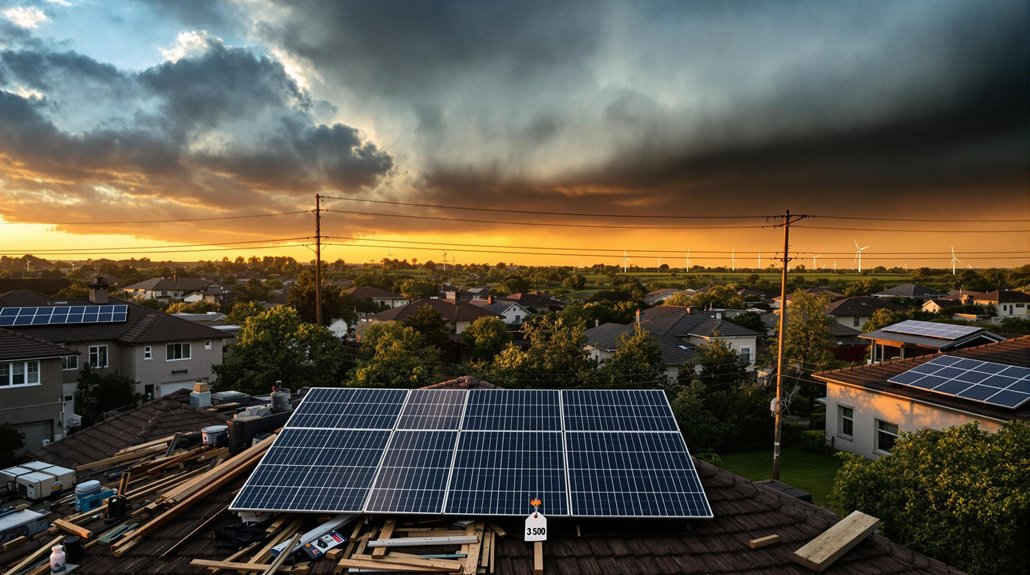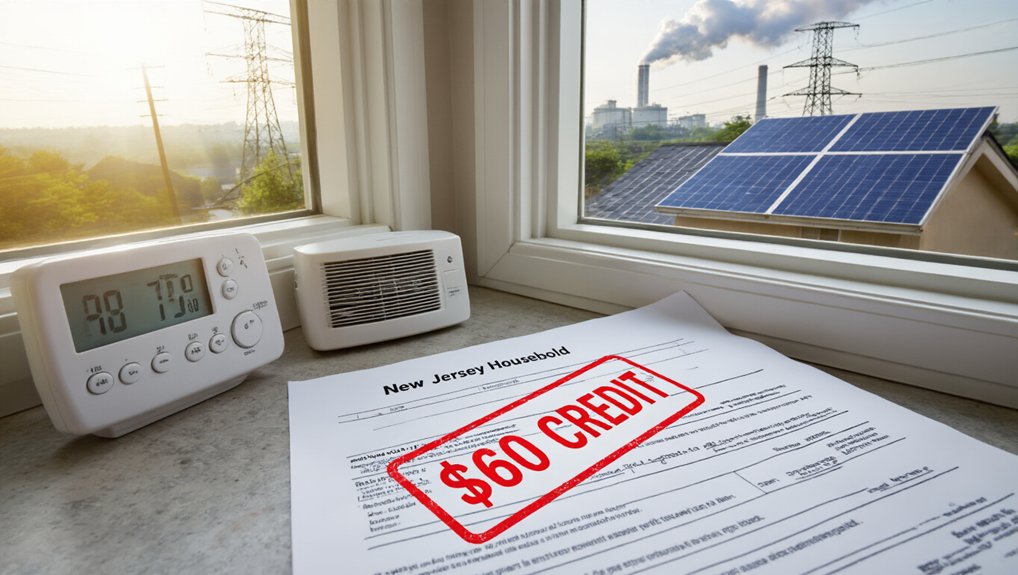Trump’s proposed 25% tariffs could increase household costs by $3,500 annually. Electric vehicles might cost $3,000 more while gas prices could jump by 35-75 cents per gallon. These tariffs threaten to make clean energy technologies less affordable for average Americans. Solar panels, heat pumps, and renewable energy projects may face delays as costs rise. The impact extends beyond consumer wallets to America’s broader climate goals.
As proposed tariffs threaten to raise prices on clean technologies by 25%, America’s move to renewable energy faces significant challenges. The new trade restrictions could impact electric vehicles, solar panels, and heat pumps, slowing down the adoption of these technologies when they’re most needed.
Economists warn these measures could add about $3,000 to vehicle costs and raise gas prices by 35–75 cents per gallon. The average U.S. household might see costs rise by $3,500 annually if these tariffs take effect. This price increase would make clean energy options less affordable for many families.
Canadian hydropower imports, which help diversify America’s energy mix, might become too expensive to compete in the market. This could force greater reliance on natural gas, especially in regions like New York.
The timing couldn’t be worse for America’s growing energy needs. Clean energy demand is expected to rise by 57 GW by 2030. Data centers alone, driven by AI growth, might require up to 44 GW.
With tariffs delaying renewable projects, the gap between supply and demand could widen dramatically. Global cooperation on green technology might also suffer. Countries that manufacture clean technology may keep their products at home rather than export them.
This could slow down emissions reduction efforts worldwide. The proposed tariffs on clean technology would stifle innovation in the renewable energy sector while hindering climate change mitigation. Investment in advanced energy technologies like small modular reactors might drop as costs rise. Government priorities may shift toward energy security and job creation rather than cutting emissions.
While domestic manufacturing could offset some price increases, it requires large upfront investments. The proposed tariffs might push economies toward using more fossil fuels to make up for renewable energy shortages. Solar power systems, which typically cost between $16,500 and $30,000 for home installation, would become even less accessible without the tax incentives that currently make them affordable.
For the clean energy shift to stay on track, experts suggest the U.S. needs policies that balance energy needs, trade relationships, and environmental goals. Industry experts like Thomas L. Keefe note that independent power production and renewable sectors will be particularly vulnerable to these tariff impacts. Without careful planning, the proposed tariffs could delay progress on climate goals for years to come.








